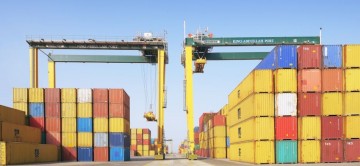Transport is currently undergoing significant disruption, not only from transformative changes in existing modes of travel, but also because of innovations shaking up the sector.
As Bhoopathi Rapolu, Cyient’s head of analytics for Europe, the Middle East and Africa, says: “New technologies, such as drones, auto-pilot cars and remotely piloted aircraft systems, are fundamentally changing the dynamics of the market by enabling visionary companies to develop cheaper, sustainable transport solutions.”
It’s not just consumer transport facing disruption. Increasing environmental concern and changing regulations are having a dramatic impact on the supply and logistics market. With e-commerce now constituting a large part of the economy, shippers need to rework business models to manage last-mile delivery.
Digital technologies and the need for omnichannel fulfilment are seeing synchronisation between procurement, transportation, warehousing, order management and fulfilment. This confluence is also driving convergence across different transport sectors.
On a sector-by-sector basis, there are different stress factors. The International Civil Aviation Organization has predicted world scheduled air passenger traffic will grow by double global GDP growth in 2015.
Improving efficiencies

The King Abdullah Port is the first major deep-water port south of the Suez Canal
E-ticketing and other streamlining opportunities are improving efficiencies, including the implementation of e-freight. This intends to build a paperless, end-to-end transportation process for air cargo across the entire air cargo supply chain.
The International Air Transport Association says it wants to see the industry move towards 100 per cent e-freight, starting with adoption of its e-Air Waybill. Yet programmes developed to increase efficiency and cut emissions, from a green taxiing system to the Single European Sky programme, have been delayed through a combination of funding problems, politics and challenges from the trade unions.
In freight terms, sea has its advantages and is up to ten times cheaper than air, per unit weight, according to Boeing. Indeed, there has been a refocus on the role of shipping within the supply chain.
While relatively small, at three million TEUs (twenty-foot equivalent unit containers), the King Abdullah Port, the first major deep-water port south of the Suez Canal, lies directly on the main Asia-Europe trunk line and can reduce East-West trans-shipment times by five to seven days. It is part of the $100-billion King Abdulla Economic City (KAEC) project that is also supported by a new high-speed railway network to connect Mecca, Jeddah, KAEC and Medina, which is expected to start operating in early-2016.
There is not an element of the global transportation network that isn’t being affected by changes in technology and demand
In the UK, Peel Ports is investing £300 million in Liverpool2 to create the country’s most centrally located deep-water container terminal. Currently Liverpool can only handle 5 per cent of the container ships that sail, while Liverpool2 will be able to handle 95 per cent, doubling the port’s throughput from 750,000 containers a year to 1.5 million TEUs.
But when China’s Yangshan Deepwater Port in Shanghai is completed in 2020, with 50 berths and an annual handling capacity of 20 million TEUs, it will surpass Singapore’s existing status as the world’s largest port.
Upgrading infrastructure
Better connected and more efficient transport networks are the goal of most countries, but in the developing world this can still mean building roads. However, in the developed world the aim is to get people off roads and on to mass-transit systems. Infrastructure improvements, such as electrification and modernisation of rail tracks to accommodate faster trains, are priorities in the UK, Germany, France, Japan, Korea and elsewhere.
An example is Melbourne, which is developing the AUS$1.5-billion Metro Rail Project. This will involve the construction of two nine-kilometre underground rail tunnels. Evan Tattersall, chief executive of Melbourne Metro Rail, says: “Melbourne Metro’s five new underground stations will directly support the growth of inner residential, commercial, health and education precincts, and make central Melbourne an attractive option for new business, generating significant investment opportunities and further positioning Melbourne as one of the world’s most liveable cities.”
There is not an element of the global transportation network that isn’t being affected by changes in technology and demand
The challenge is transport investment often suffers at the hand of political expediency. In the UK, this can be exemplified by the history of London’s Crossrail projects. Despite the fact that passenger numbers on the Tube have increased by 40 per cent in the past 15 years and the equivalent of the population of Manchester now rides underground in the capital every day, the £27-billion Surrey to Hertfordshire Crossrail 2 project has yet to be approved. The delay has been put down to political disagreement on the exact route, agreeing a funding deal and finalising the construction timetable.
Taking an overview, there is not an element of the global transportation network that isn’t being affected by changes in technology and demand. While investment in shipping, aviation and rail continues unabated, with new projects attempting to include the latest technological breakthroughs, it is perhaps road transport that looks to be most affected by changing paradigms.
The impact of telecoms and the internet on road vehicles cannot be underestimated. In a world that is increasingly connected through big data and the internet of things, traditional transport models must continue to adapt and evolve.
Improving efficiencies

